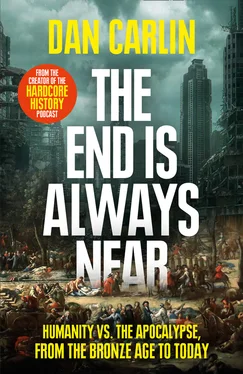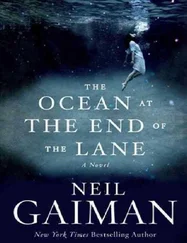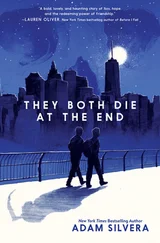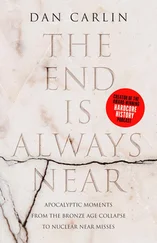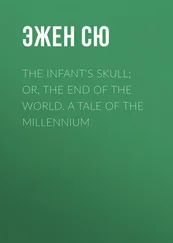DeMause’s The History of Childhood describes various implements of corporal punishment, including
• whips of all kinds,
• cat-o’-nine-tails,
• shovels,
• canes,
• iron and wooden rods,
• bundles of sticks,
• “disciplines” (whips made of small chains), and
• “flappers” (school instruments with a pear-shaped end and a round hole, used to raise blisters).
Today there is almost no chance we would countenance the use of a discipline tool specifically designed to raise blisters on a seven- or eight-year-old child. Yet the oft-cited line “spare the rod and spoil the child” asserts that a parent who is too lenient with physical punishment on children is doing them harm. People took this admonition seriously for a long time.[6]
It’s hard to blame parents for not seeing the potential damage they were doing to their children, because, after all, this is how they themselves had been raised. If we are imagining what a society of abused children might be like to live in, consider for a moment how they might raise their own offspring. The historian M. J. Tucker in an essay in The History of Childhood gives an account of the harsh treatment Lady Jane Grey[7] endured at the hands of her parents and then writes that “Jane’s parents were typical … Common usage decreed that parents who love their children will beat them.” He says that this is how the children often saw it as well: “Little girls, like Lady Jane Grey, never doubted that her beatings issued from parental concern and blessed herself that her parents took their responsibility so seriously.” Lady Jane Grey would be executed as a teenager after being caught up in a royal succession crisis. Had she lived, though, and wished to have been a good mother by the standards of the time, how would this beaten child have been likely to behave toward her own kids?
While child beating has gone out of fashion, corporal punishment is still practiced in some public school systems in the United States, and there are still people who defend its use as valuable (albeit not to the degree of severity we just talked about). The same cannot be said for some of the other kinds of abuse that many children of past ages were subjected to. For instance, some societies and cultures of the past held wildly differing ideas of what should and shouldn’t be okay sexually between adults and children.[8] It not only makes it difficult for us today to relate to those cultures and peoples but it’s hard to imagine that such cultural perspectives didn’t have a large effect on their reality. It wasn’t particularly uncommon in many cultures in past eras for children to be viewed as sexual objects and sometimes to be used as such. There are four-hundred-year-old accounts of sailors who encountered overtly sexual women on Pacific Islands, but some of these “women” were as young as ten. To us, such sexual relations may seem bizarre or even obscene, but what if the society these sailors existed in didn’t think so?
In other ages, antiquity for example, the mores were often very different from our own when it came to sex and children.[9] In the ancient Mediterranean, both heterosexual and homosexual sex between adults and children was in many places an accepted part of the culture. Would the children in those ancient cultures experience the same long-term adverse effects we would expect to see in children who had sex with adults today? If they did, one wonders how this might have affected how those societies developed. If they didn’t, that’s also interesting—one would have to wonder why.
Even parents who wanted to do the best for their children and were perhaps less inclined to outright beat them could do great damage to them by simply following the prevailing wisdom at the time—inadvertent child abuse, if you will.
One common practice throughout much of human history was to give children liquor or opium to relieve teething pain or to help them sleep. As recently as the 1960s, it wasn’t unusual for a doctor to prescribe sleeping medication for children, or for parents to rub whiskey on a teething infant’s gums. We know now these substances are harmful, but there were some people who recognized the problem even hundreds of years ago. The History of Childhood quotes a British doctor named Hume, who complained in 1799 of thousands of child deaths caused by nurses “forever pouring Godfrey’s cordial down little throats, which is quite a strong opiate, and in the end as fatal as arsenic.”
Once upon a time, it was considered good parenting to teach your children a moral lesson in right and wrong by taking them to witness public executions. To make the lesson really stick, parents sometimes beat their children as they watched, forever linking the spectacle with physical pain. And the practice of beating a child so he or she wouldn’t forget was done for other reasons, too. Anglo-Saxons sometimes beat kids so that they would recall a given day for legal reasons, such as presenting evidence at trial—physical violence as a kind of notary public service, or long-term reminder note.
In modern times, we worry about our kids’ exposure to simulated violence on television or in video games and whether it desensitizes them to real-life atrocities. But in many past eras it may have been actual violence, not the made-for-TV variety, that desensitized children to more of the same. Think of the children who grew up in cultures where they would have seen real-life killings and torture up close by the time they were five, six, or seven years old. In some cases, they might have even participated in it.[10]
If we heard of a modern child with such a bloody or violent upbringing, we would assume he or she would be a very damaged person in need of counseling and help. It’s hard to determine, though, if all children in all times and all cultures would be affected the same way by such experiences. It’s possible that people in earlier eras who grew up seeing animals butchered and people killed as a matter of course weren’t affected the way a person with modern sensibilities would be. Today we might assume certain things would hurt any human being at any time, but this may not be true. Actions don’t have to cause obvious harm to create a significantly different version of a human being. A child (either today or in the past) who has witnessed several very violent live public executions is going to be different from the other children in our society. Any modern child with the same life experiences would probably be prescribed some sort of therapy and perhaps medications for a long time.
After considering such heavy-duty abuse, you might think something like physical or emotional child abandonment would sound like a lightweight issue—but modern experts who deal with children have no doubt about the lasting negative impact that a lack of sustained contact between parents and children can have. The psychohistorians assert that such situations may have damaged a lot of children in the past. This seems like a no-brainer on the surface, but trying to determine how this might have affected the past on a macro scale is seemingly impossible.
In many past societies, parents and children had less contact than we are accustomed to today.[11] Even the bonding experience of a mother feeding her infant was something often farmed out. For thousands of years, in many societies and cultures, the human institution of the wet nurse was very popular. There are stories of wet nurses—women who breastfeed other women’s babies—in the Bible and going back to ancient Babylon. Roman wet nurses gathered at a place called the Columna Lactaria (the “milk column”) to sell their services. For mothers who couldn’t produce milk or had died in childbirth, the wet nurse filled a real need, especially when many such societies didn’t believe in giving infants animal milk.
Читать дальше
